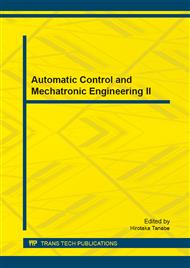p.396
p.402
p.409
p.414
p.418
p.423
p.427
p.431
p.436
Simulation Research on Head Structure and Rod Components
Abstract:
In order to further optimize the structure of tube-rod extended penetrator, the author did numerical simulation to the penetration process of five different head structures and rod assembly of tube-rod extended penetrator to finite RHA603 target with LS-DYNA at a certain speed. Be drawn from the results of the numerical simulation, the penetration effect of truncated cone head structure is the best, because its top angle is small, the wave on the top is weak, the overpressure is small, and it is faster to open a pit on the target. 3mm aluminum sleeve rod attachment structure is the best. In the early penetrating stage, it can enhance the stiffness of the the rear rod, so that it will not deform under the stress wave in front penetration. In the late penetrating stage, due to the weak aluminum sleeve, it is easy to crash in contact with the target plate, so no excessive energy of the rod is used to open the pit.
Info:
Periodical:
Pages:
418-422
Citation:
Online since:
September 2013
Authors:
Price:
Сopyright:
© 2013 Trans Tech Publications Ltd. All Rights Reserved
Share:
Citation:


